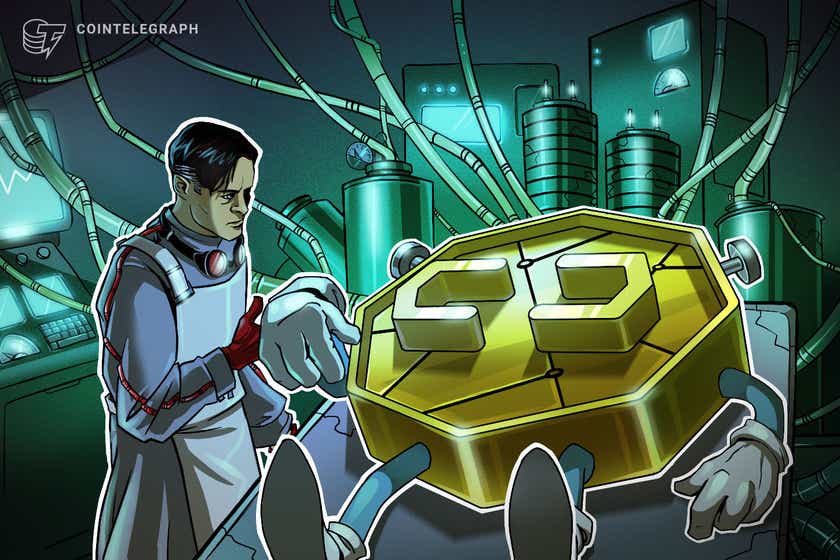Following the session that took place last August, a three-judge panel from India’s Supreme Court reconvened once again this week to discuss the much-hyped Crypto v. RBI case. During the last hearing, the Supreme Court had asked the Reserve Bank of India (RBI) to clarify its position as to why exactly it enforced a nationwide banking ban on the country’s crypto market, as well as to discuss the seemingly unconstitutional nature of its aforementioned move.
Ever since the RBI decided to go ahead and issue its controversial prohibition order, a number of public and industry-led petitions have been filed by prominent members of the Indian crypto community contending that the RBI’s decision was not only unjust but also in clear violation of the law.
As part of its reply, the RBI’s legal counsel pointed out that the institution has complete authority to operate India’s currency and credit system and to protect the nation’s overall financial stability — if it feels the need to do so.
In this regard, the ongoing petition that is currently being heard in front of the Supreme Court has been brought forth by the Internet And Mobile Association of India (IAMAI), a not-for-profit industry body that seeks to expand and enhance India’s online and mobile value-added services sectors.
Latest developments
When the aforementioned case was reopened earlier this week, Ashim Sood, the counsel for the IAMAI, started off by reviewing the arguments that had previously been discussed in court last August. For starters, he once again explained to the judges some of the basics underlying cryptocurrency and blockchain technology and also read out the guidelines issued by the Financial Action Task Force last year.
Additionally, after explaining how countries like Australia, Malta and Japan had been largely successful in regulating their local crypto markets, he emphasized the need for conventional banking avenues to be made available to blockchain/crypto business owners. Under such favorable regulations, investors, as well as casual altcoin enthusiasts, could gain access to digital currencies in a streamlined, transparent manner.
Cointelegraph spoke to Sumit Gupta, the CEO of DCX, an Indian cryptocurrency exchange, and he believes that Sood has proffered some good arguments on the matter of how the technology works, and how it can be used, given that the right regulation is in place:
“On the question of anonymity with virtual currencies, he explained the strong KYC process practiced by various exchanges. He argued that, although the industry follows strict self-regulation, it cannot enforce them beyond a point, and hence highlighted the importance of positive regulation. He discussed that every new technology will have a grey side, however, positive regulations that curb the negatives are the need of the hour.”
As part of its defense scheme, the RBI alluded to incidents, such as the Binance KYC breach of 2019, as being clear examples of why the crypto industry at large is still in its infancy, and thus, poses a massive cybersecurity threat to the economy of any nation where it is allowed to foster and grow.
However, Sood told the judges that such cyber attacks were exactly the reason why positive regulatory measures were needed in India — so that the sector as a whole could be better equipped to face such challenges.
He then alluded to a couple of previous judgments passed by the Supreme Court, which clearly stated that legal activities can be only be shut down if a definitive risk has first been identified by the Indian parliament and not by an administrative body like the RBI. In regards to the matter, Gupta added:
“RBI’s arguments may sound inadequate, however, that is something for the judges to decide. Our judicial processes are strong enough and we have complete trust in them.”
Lastly, Kashif Raza, founder of Crypto Kanoon, an Indian crypto news platform that has been covering the ongoing hearing live via its Twitter channel, told Cointelegraph that the main goal of IAMAI’s legal counsel is to establish the fact that the Indian crypto community is not trying to push digital assets as being currencies but rather as alternative investment options. He further added:
“The IAMAI drew the focus of the court on the fact that nowhere in the FATF’s guidelines is it mentioned that cryptocurrencies should be banned completely. India is a member of the FATF, and most of the agency’s guidelines demand for KYC and better cooperation between members when it comes to controlling the cross border movement of crypto-assets.”
Indian Judges seem to have an open mind
Indian judges, who are currently presiding over the hearing, seem to be eager to learn about crypto-based technologies and the immense economic possibilities that they represent. For example, they have requested the legal counsel for the IAMAI to explain how cryptocurrencies were being regulated in countries like Australia, Italy, Malta and Japan, and whether or not instances of money laundering or tax evasion had increased following the implementation of these measures.
In response, Sood proceeded to take the judges through a detailed comparative table related to different countries, their regime nature and how they were handling crypto-related matters within their respective jurisdictions. Furthermore, he also cited the example of Mt. Gox, and how its collapse led to the creation of an efficient regulatory framework by the Japanese government.
Related: India’s Income Tax Department Is Secretly Training Its Officials to Investigate Cryptocurrencies
The Judges further requested a detailed explanation regarding how current crypto-crypto and peer-to-peer exchange models work as well as how digital currency trading actually takes place. Sood, in response, explained to the panel the various laws that are currently being employed in South Africa, the United Kingdom and certain states of the United States that allow people to trade digital assets in a fully legal and taxable manner.
Lastly, the Supreme Court questioned the IAMAI about various suspicious services, like Silk Road, the dark web, Tor and onion routing, and how such avenues have been used by bad actors to abuse digital currencies in the past. However, the judges did concede that crypto, like any other technology, was not bad in itself and could be used for nefarious reasons when in the hands of the wrong people.
To elaborate on the subject, Varun Sethi, CEO of Blockchain Lawyer, told Cointelegraph that “The RBI’s argument that crypto’s anonymous nature poses a threat to national security cannot be totally ruled out.” He added that, indeed, crypto can freely flow between international borders, while the cybersecurity risks are hard to deny. He went on to say:
“However, such arguments are similar to challenges faced by other regulators also. The court would surely take cognizance of similar facts and how it was dealt with in other countries.”
Some key concerns put forth by the Supreme Court
Even though the Supreme Court seems to be finally understanding the potential that crypto and blockchain technologies possess in regards to transforming a multitude of local industrial domains, it did express concerns regarding the use of digital assets for money laundering and tax evasion purposes.
Digging deeper into this argument, Tabassum Naiz, founder of Bit2Buzz, an Indian crypto hub that presents users with a host of educational content, pointed out to Cointelegraph that recently, a number of established Indian financial/banking entities suffered heavy losses due to a host of different cybersecurity breaches and threats. Naiz alluded to banks like HDFC, ICICI, the State Bank of India, Axis and Punjab National Bank as having been embroiled in massive scandals related to money laundering and data breaches.
While local cryptocurrency exchanges do make use of KYC protocols to minimize the occurrence of such issues, their measures are largely self-designed and, therefore, need to be validated by a central regulatory agency. On the issue, Sethi highlighted:
“If an exchange’s KYC processes are stringent and also validated by a government regulator, then the argument that all crypto transactions are used only for anonymous trading won’t hold valid. That’s where government policy is needed.”
Gupta, too, reiterated Sethi’s sentiments and claimed that self-regulation has its limits and that a government devised regulatory framework will actually strengthen the Indian crypto ecosystem — a point that has been sufficiently argued by Sood and his team this past week.
Lastly, a World Bank report regarding mining-based electricity consumption was also read in court to highlight the potential negative impact of the crypto industry on India’s power sector. However, the judges proceeded to spell out the various advantages of cryptocurrencies and how they have the potential to serve the under/unbanked, as well as fill out the many deficiencies that currently exist within the Indian payments market.
Supreme Court grills the RBI
As aforementioned, the RBI has claimed that the reason it restricted crypto activities in India was because of a lack of clear regulations, especially in regards to things like financial anonymity, money laundering, etc. However, in the opinion of the judges, it was the responsibility of the RBI — and not the local crypto exchanges — to devise a regulatory system that incorporates crypto into India’s general financial framework. Essentially, the Supreme Court labeled the RBI’s ban as being a burden-shifting ploy that was unjust.
Similarly, when the RBI stated that digital currencies were only being used by people who wanted to mask their identities, Sood told the judges that this information was factually incorrect and that many people merely viewed cryptocurrencies as being alternative investment options to conventional stocks and bonds.
What may the verdict look like?
As things stand, it might be a little early to definitively claim to which side the verdict will swing, especially since the RBI has yet to present its complete argument in front of the judiciary. However, Gupta is confident that the IAMAI’s case is strong, and that the judges will see merit in the arguments put forth by the independent agency, “We are of the firm belief that the judges will see reason in our arguments and provide a judgment, which is fair and favorable.”
It is expected that on Tuesday, Jan. 21, the RBI will submit all of its remaining statements regarding its concerns about cryptocurrencies.









